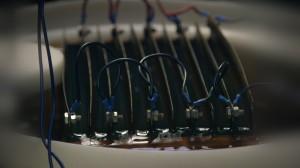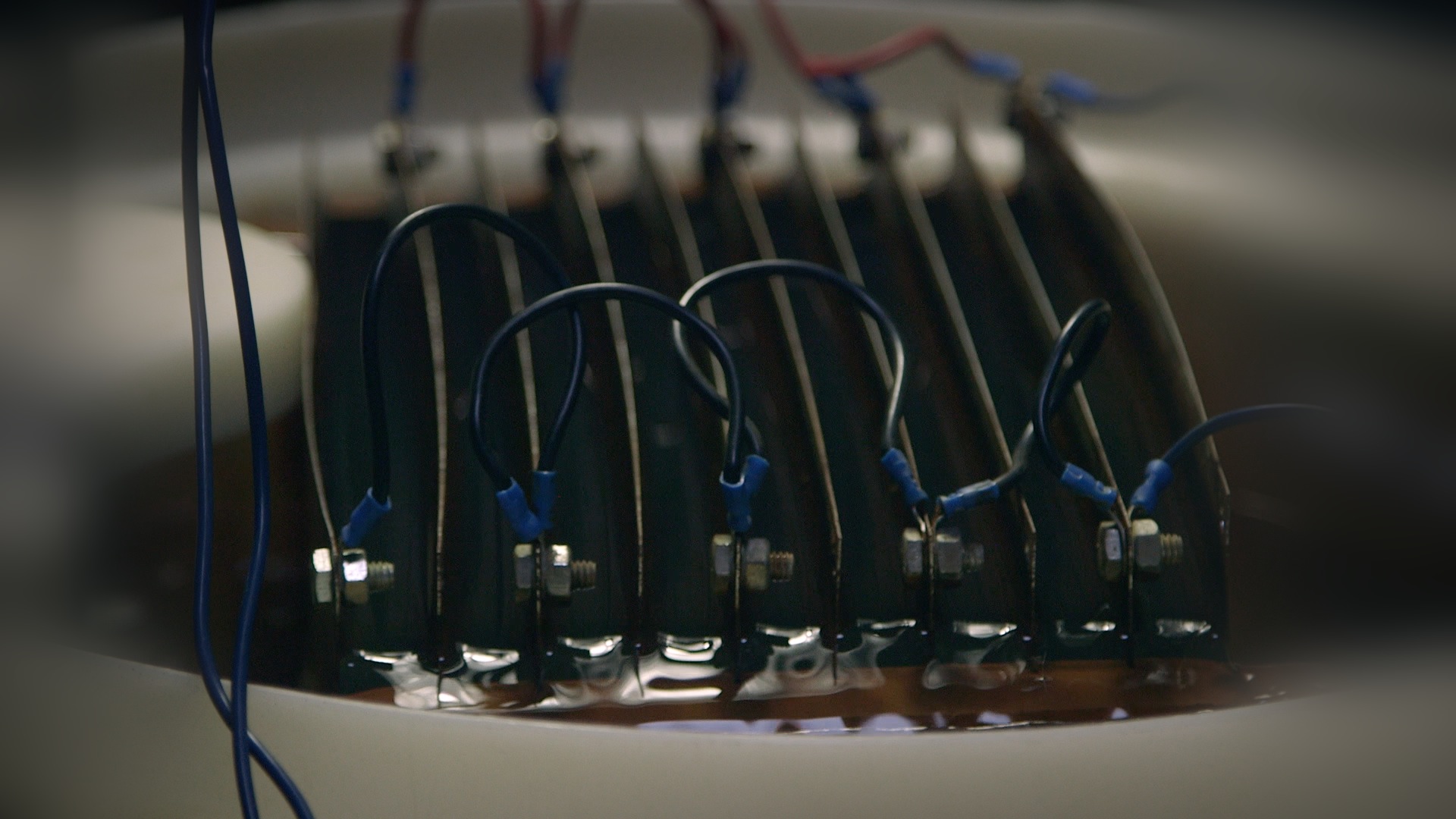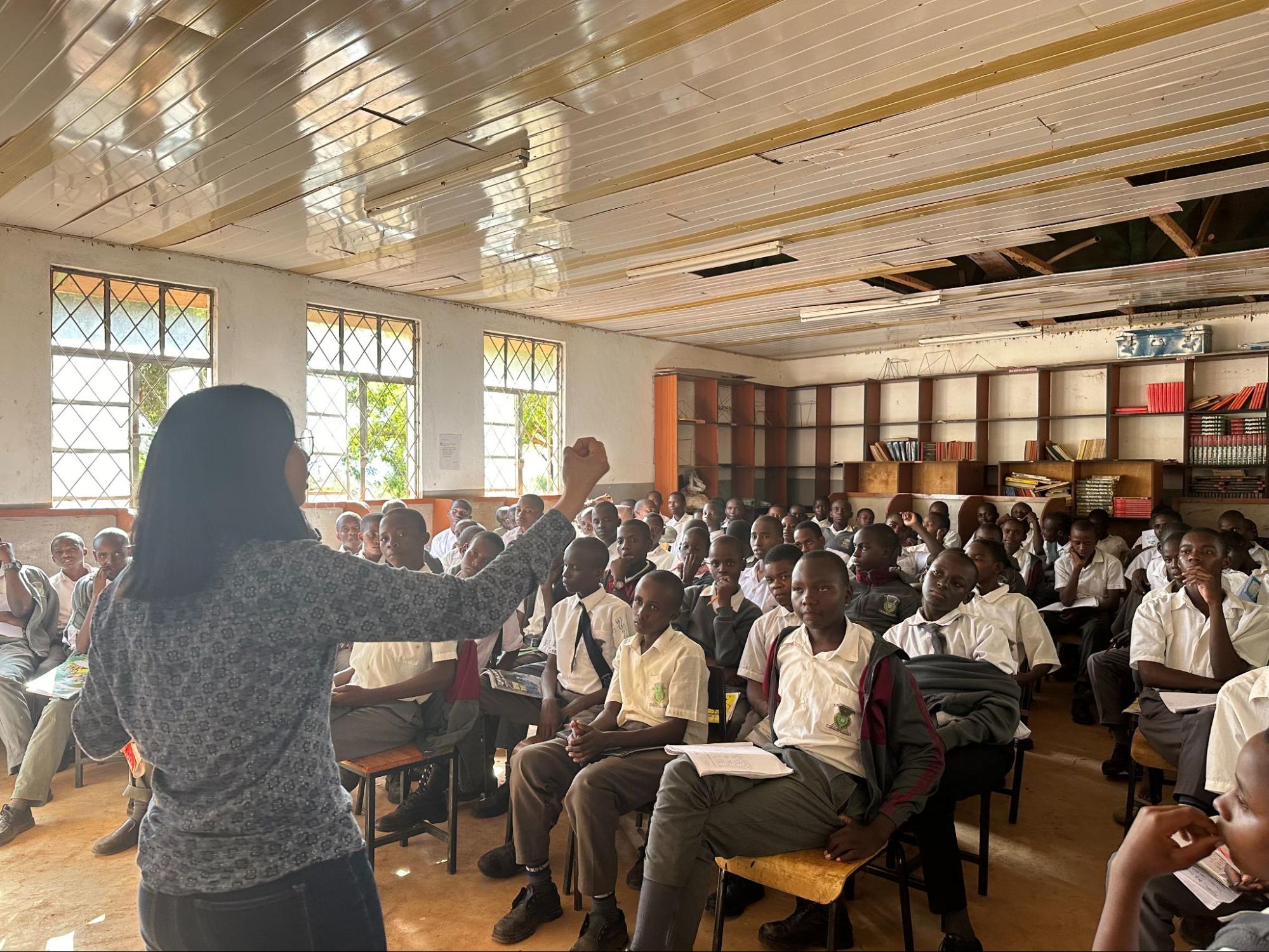By Tamara Straus

In 2006, when UC Berkeley Civil Engineering Professor Ashok Gadgil began researching the possibility of removing arsenic from drinking water using electrochemistry, he targeted his invention at South Asia, specifically Bangladesh and West Bengal, where more than 60 million people are estimated to be consuming groundwater with dangerously high arsenic levels.
Gadgil’s invention, ECAR (short for Electrochemical Arsenic Remediation) has since been tested in his lab and is currently being implemented in the field, thanks to funding from the Lawrence Berkeley National Lab and the Development Impact Lab. Since December 2013, the technology has been under license by the Indian company Luminous Water Technologies, which plans to bring ECAR to arsenic-affected villages throughout India and Bangladesh. Meanwhile, members of the ECAR team, lead by Gadgil and Susan Amrose are conducting a 10,000 liter-per-day trial of the system in preparation for the considerable scaling.
For Gadgil and Amrose, these outcomes are the result of years of experimenting, planning, and partnering. One outcome they didn’t necessarily expect, however, is unfolding here in the United States. During the summer of 2013, Amrose and John Pujol launched their own company, SimpleWater, using the same electrochemical arsenic remediation technology developed in Gadgil’s lab but directed at the tens of thousands of wells and rural American water systems with high levels of arsenic. With funding from the U.S. Environmental Protection Agency, SimpleWater successfully validated the technology in California in 2014 and is now preparing a larger scale pilot in Grimes, California. ECAR was also awarded a 2013 UC Proof of Concept Program Commercialization Gap Grant, to see if it could be used to remediate arsenic-contaminated groundwater in California.

This turn of events is a prime example of what business and engineering scholars are calling “reverse” or “boomerang” innovations—whereby products and services developed as inexpensive models to meet the needs of developing nations are then repackaged or remodeled as low-cost alternatives for developed markets. In the case of Grimes, a town of about 550 people 50 miles north of Sacramento, ECAR technology may prove as useful to residents as those in rural Bangladesh—although the regulatory, political, and environmental conditions are quite different.
Amrose explains that the water treatment needs of remote, low-income, and small American communities have largely been ignored, because U.S. innovation focuses so much on large municipal systems. “ECAR technology was designed to be affordable and robust in rural and primarily very low-income South Asian communities,” she said, “which translates easily to the unmet U.S. needs that SimpleWater is addressing.”
One reason that arsenic-contaminated water has been overlooked globally is that it is hard to detect. Arsenic dissolves from soil and rock into drinking water supplies and is tasteless and odorless, but it unquestionably a poison. Over the past few decades, scientists have found increasing evidence that chronic ingestion of arsenic results in lower IQ in children as well as severe maladies, such as lesions, diabetes, cancer, and blood vessel diseases that can lead to gangrene, amputation, and premature death. As a result, in 2001-2002 the World Health Organization and the Environmental Protection Agency set a new drinking water standard prohibiting the consumption of water with more than 10 parts per billion (ppb) of arsenic. Yet arsenic in drinking water has remained an international problem for which long-term solutions have been elusive.
As Gadgil told Lawrence Berkeley Lab News in a 2014 article, “A lot of technologies to remove arsenic on the community- and household- scale have been donated. But if you go to these villages it’s like a technology graveyard. One study found that more than 90 percent failed within six months, and then were abandoned to rust in the field.”
Among the reasons Gadgil thinks ECAR could prove effective is that the technology has been created to be inexpensive and easy to maintain. Unlike complex chemical processes or maintenance-heavy devices, ECAR works by using electricity to quickly dissolve iron in water. This forms a type of rust that binds to arsenic—and that can then be separated from the water through filtration or settling. ECAR is not meant to serve large populations that are serviced by government water systems. Instead, the technology is designed for residents who can collectively maintain and own a water system.
One of the goals of SimpleWater’s ArsenicVolt system is to provide remote monitoring of arsenic levels. This is being done, said CEO Pujol, for a very simple reason: There are few water engineers in the U.S. with expertise in arsenic or other heavy metals—and even fewer who will live in a small town. Indeed, lack of detection of arsenic is one of the biggest problems facing small system U.S. water supplies. According to data collected over the past four decades by the U.S. Geological Survey, for example, 25 percent of public groundwater supply sources in parts of California’s Central Valley of exceed 10ppb of arsenic, which became the federal standard in 2008.
Pujol points out that the burden of arsenic is disproportionately falling on minorities and residents of lower socioeconomic status. A 2012 study of community water systems in the San Joaquin valley showed that minorities and low-income residents have higher levels of arsenic in their drinking water and higher levels of non-compliance with drinking water standards. Those communities, said Pujol, are likely to be overlooked by new technologies.
“Innovation in the drinking water treatment industry, of which there hasn’t been a lot, has focused on the big profit centers, which are big water systems in LA, Chicago, San Francisco, and so on,” said Pujol. “The smaller places have been left in the dust; they can’t afford to buy those technologies at smaller scales.”
Pujol said SimpleWater identified Grimes as the pilot location because it is small and low-income, but also because it has a persistent arsenic problem. Grimes’ water management system is also run by Stuart Angerer, who works as the environmental monitoring section chief at the U.S. Bureau of Reclamation in Yuba City and is deeply interested in technological innovation. Angerer explained that previous attempts to remove arsenic from Grimes’ drinking water were inadequate, and building a treatment plant would be too expensive.
Yet Angerer noted, “The big thing for SimpleWater will be getting California approval from the State Water Resource Control Board. There’s going to be a lot of scrutiny and tests, but I am hopeful because we need innovative approaches that are simple and save us money.”
Pujol is currently installing an ArsenicVolt in Grimes in preparation for a six-month test. He said if the ArsenicVolt gets government approval, SimpleWater does not plan to directly sell its invention. Rather, it would look for a large water treatment systems company to acquire the technology and add it to its portfolio of solutions.
“This was about going after a solution to a really gnarly problem—dangerous levels of arsenic in drinking water—and coming back with a reliable innovation that can been tested and implemented in a more rigorous regulatory environment,” said Pujol. “I believe electrochemistry can transform the way water is treated in small communities, whether in a small town in India or California.”




